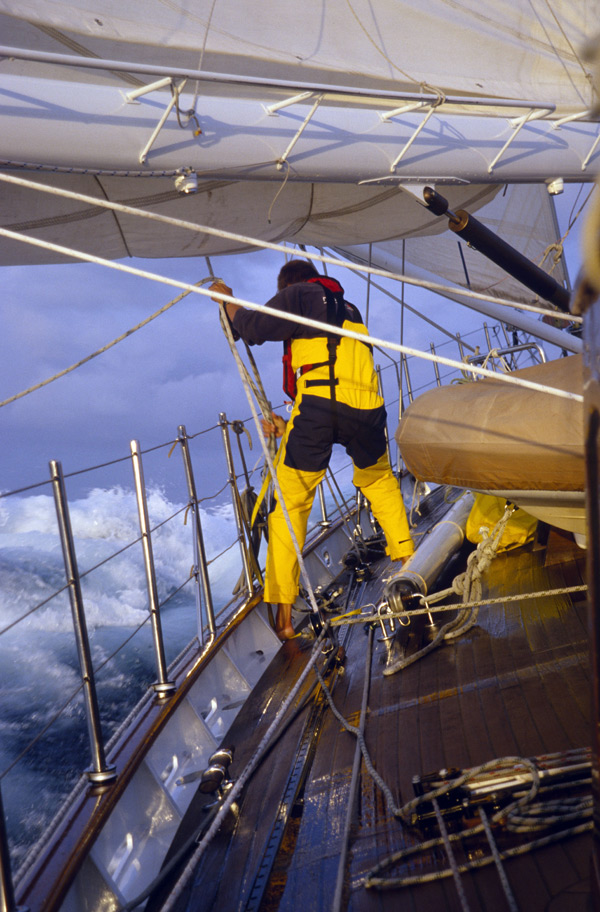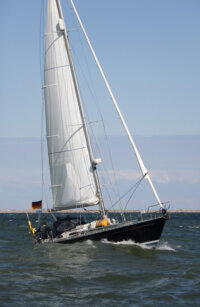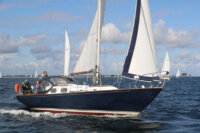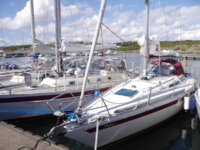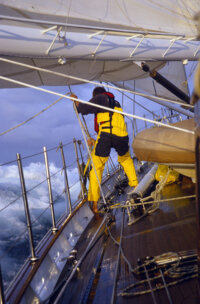Which is the better solution – have your halyards (and reefing lines) at the mast, or led back into the cockpit? This seems to be an ongoing discussion and the cruising community seems to be split fairly evenly in half on this. So, for anyone undecided, this is a good reason to sum up the pros and cons of each way of handling your sails.
Reefed mainsail, Rolly Tasker Offshore Tri-Radial, with halyards at the mast.
HALYARARDS AT MAST: PRO
- Easy to haul, better angle to pull, less friction – the main goes up and down much easier.
- Easy to sort out problems, you are already there to sort things out.
- Better overview of everything.
- Slab reefing is much easier to do at mast.
Traditional cruising boat with halyards at the mast
HALYARARDS AT MAST: CON
Working on deck at the mast in big seas not for everyone. Although safety can be increased by granny bars, high and solid railing and stanchions, inboard webbing jackstays, wide, uncluttered decks. Cockpit also offers only comparative safety if you are in an awkward position when hauling the halyard, or in danger getting in the way of mainsheet.
HALYARARDS IN COCKPIT: PRO
No need to leave the cockpit, unless when reefing or sorting out a problem at the mast.
The full system – fully battened mainsail, lazy jacks and lazy bag for sail drop, one-line reefing system – if that works, only up to a certain size of boat, then it is pure joy.
Modern cruising boat with all halyards led back to the cockpit
HALYARDS IN COCKPIT: CON
High friction in halyard, needs to be winched up early and long.
When lowering sail, the halyard will often foul and get stuck in the rope clutch. Especially, if you need to go forward to help the sail down.
Putting the reef cringle into hook at the luff can be awkward when not working from the mast, you have to go forward anyway and then the reef cringle might fall out of the hook while going astern. Solution: Fit a cam cleat on the mast to provisionally tighten the halyard so that the reef cringle stays put, then tension the halyard properly from cockpit with the winch, the halyard will automatically fall out of the cam cleat on the mast. Alternatively, instead of a hook to take up the reef cringle, fit a snap shackle into which the reef cringle is fastened.
THE BOTTOM LINE
On large yachts the halyards will have to be at the mast, but working on deck is much easier and safer
In the end, it seems to come down to personal taste. However, the larger the boat and the sail, the more speaks for having the halyard winches at the mast. Larger boats also tend to be more stable in rough seas and have wider decks, so working at the mast will be less troublesome than on boats of, say, up top 35 or 40 feet in length. Having the halyards led aft to the cockpit correspondingly works best on smaller boats, when the increase in friction is not so great and where the sail is of a size that will easily go up and down without the need for a crew to help raise or lower it at the mast.
